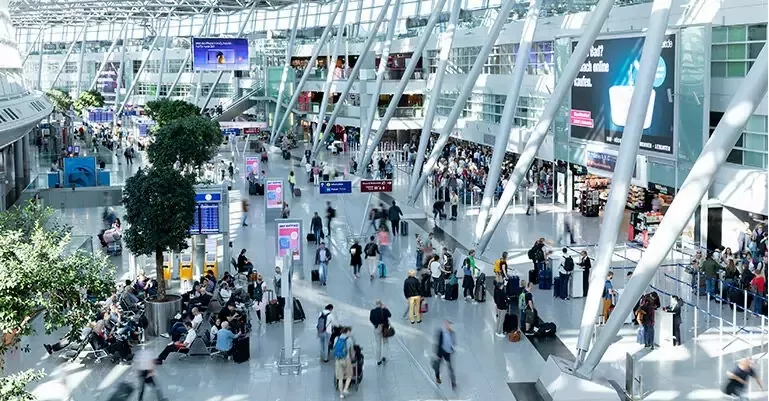Introduction:
Airports act as indispensable infrastructures that enable the seamless transportation of passengers and goods worldwide. Recent advancements in technology have played a pivotal role in reshaping airports into sophisticated and intelligent centres. By bolstering security protocols, optimizing operational procedures, and enhancing the overall passenger journey, technology has ushered in a paradigm shift in airport functionality. If you need more information, then visit optimization platform for airport operators.
This delves into the myriad ways in which technology empowers airports and underscores the advantageous outcomes these innovations bestow upon the aviation industry.
- Heightened Security Measures: Safeguarding the well-being of travellers, staff, and airport premises remains an utmost priority. With the advent of technology, security measures at airports have undergone a remarkable transformation. Sophisticated systems now augment threat detection and prevention, fortifying overall security. Cutting-edge imaging technologies like millimetre-wave scanners and full-body scanners have revolutionized security screening, enabling the detection of concealed objects with exceptional precision. Biometric authentication methods, encompassing fingerprint and facial recognition systems, streamline the passenger identification process while ensuring robust security protocols are upheld.
- Enhancing Operational Efficiency: In the realm of managing growing passenger volumes and striving for optimal efficiency, the optimization of airport operations becomes paramount. To achieve this, airports harness the power of advanced technology solutions, including airport management systems, real-time data analytics, and artificial intelligence (AI) algorithms. These cutting-edge technologies empower airports to efficiently monitor and oversee diverse processes. By facilitating effective resource allocation, streamlining baggage handling, optimizing aircraft maintenance scheduling, and maximizing runway utilization, these technologies effectively minimize delays and elevate operational efficiency to new heights.
- Enhancing Passenger Journeys: The advent of technology has brought about a transformative impact on the passenger experience, enabling a seamless and hassle-free journey. Self-check-in kiosks and the convenience of mobile boarding passes have effectively eradicated the need for long queues, revolutionizing the check-in process. Furthermore, the introduction of intuitive wayfinding apps and interactive digital signage within airports has significantly minimized confusion and elevated the overall passenger experience by providing clear guidance throughout their journey. Moreover, the implementation of self-service bag drop facilities and automated immigration clearance systems has remarkably expedited the security and immigration processes, effectively reducing wait times and ensuring a smoother passage for travellers.
- Building a Connected Airport: The vision of a smart airport encompasses the integration of diverse technologies to forge a seamlessly interconnected and efficient environment. Key to this transformation are Internet of Things (IoT) devices and sensors that diligently monitor and regulate critical aspects such as lighting, temperature, and energy consumption, thereby optimizing resource utilization. Leveraging real-time data and mobile applications, smart parking systems enable passengers to effortlessly locate parking spaces, while simultaneously improving traffic flow in and around the airport premises.
- Empowering Seamless Communication: With the aid of technology, airports have made significant strides in delivering uninterrupted communication and connectivity, thereby enriching the travel experience for passengers. The provision of high-speed Wi-Fi access has become a standard offering, ensuring travellers can remain connected and productive throughout their journey. Moreover, the advent of 5G networks brings forth faster data speeds and reduced latency, laying the foundation for the integration of cutting-edge technologies like augmented reality (AR) and virtual reality (VR) applications within airport premises.
Conclusion:
In conclusion, the ongoing advancements in technology are driving a profound transformation in the aviation industry, revolutionizing airports into intelligent and high-performing entities. Through the incorporation of innovative solutions, airports are fortified with enhanced security measures, streamlined operations, and elevated passenger experiences. The integration of technology empowers airports to meet the ever-increasing demands of the contemporary world, resulting in safer, more efficient, and seamless air travel experiences for passengers.







